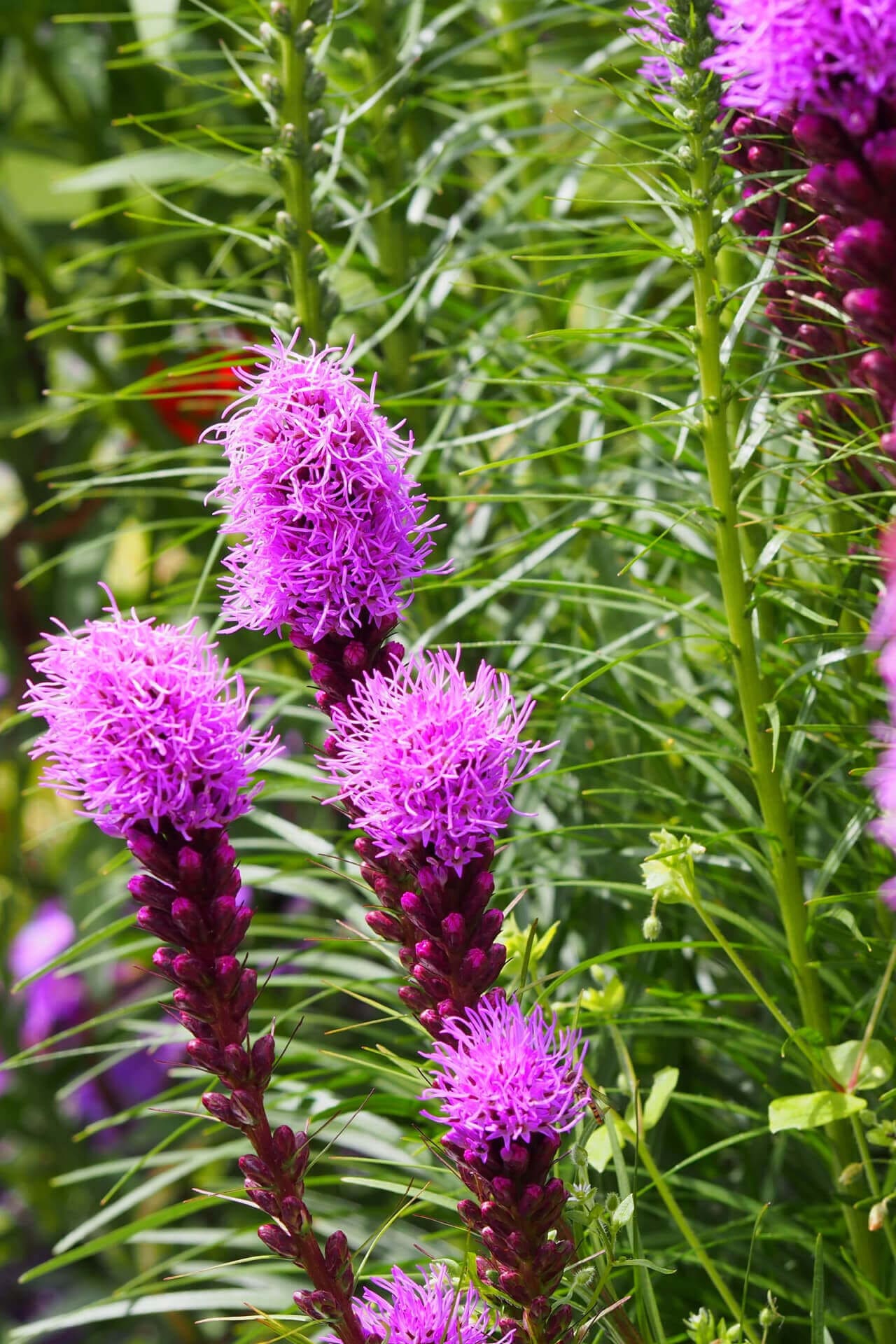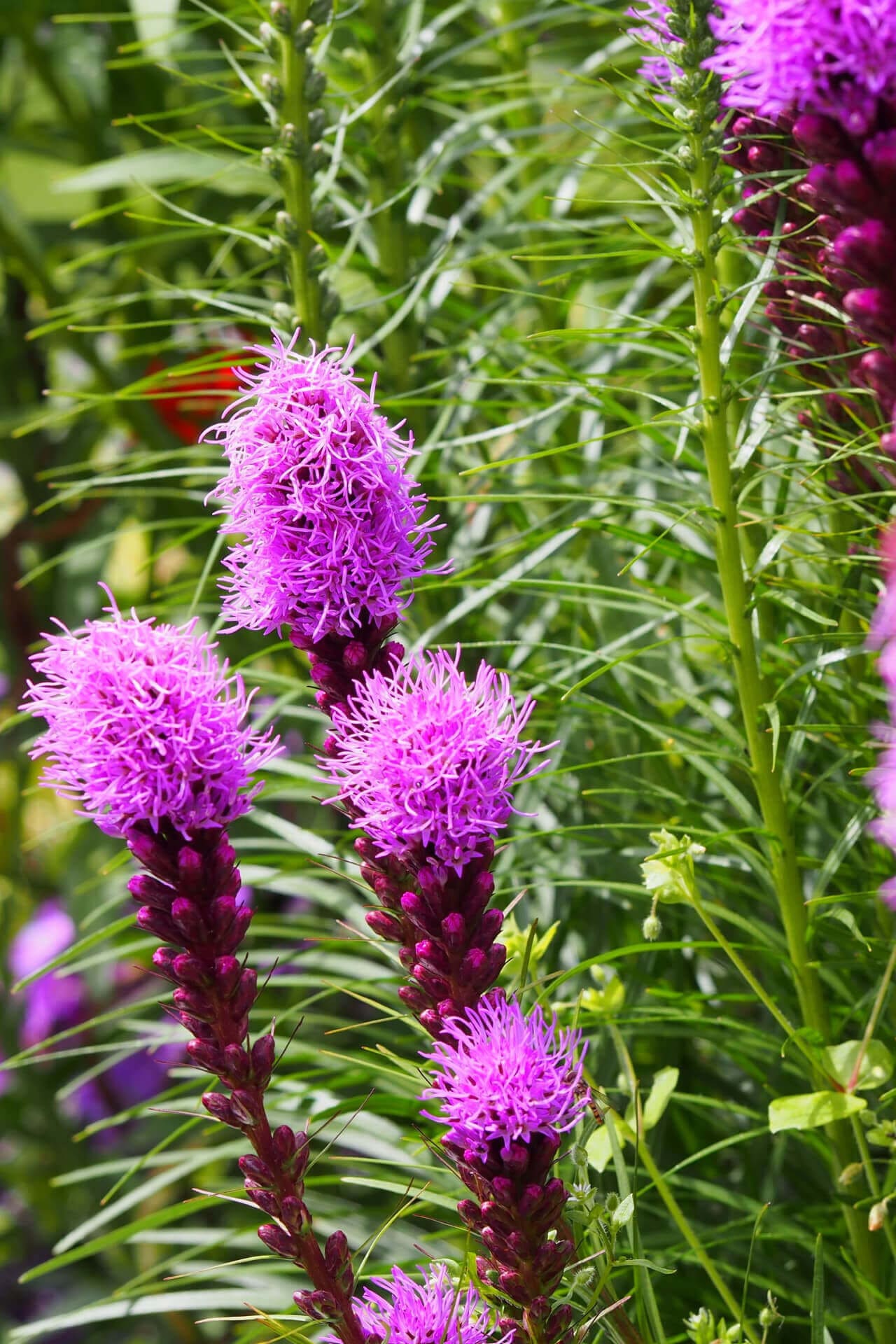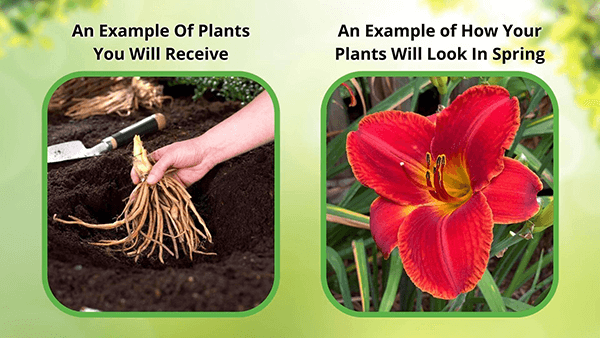Blazing Star
Blazing Star
| Order | Percentage Discount | ||
|---|---|---|---|
| 2-5 | 25% Off | ||
| 6-10 | 30% Off | ||
| 11-25 | 35% Off | ||
| 26-50 | 45% Off | ||
| 51+ | 65% Off | ||
Couldn't load pickup availability
5-7 Days
Over 12"
Full Sun
3-9
Flowering
Bare-root
Blazing Star - Liatris
Blazing star, also known as Liatris spicata, is a perennial plant related to the Asteraceae family. It's native to North America and can be found in various habitats, including prairies, meadows, and open woods.
Shape and Growth
The plant grows to a height of 2-5 feet and has a slender, erect stem with narrow, lance-shaped leaves that grow up to 12 inches long.
Blazing Star Plant Is Hardy and Spring Blooming
In midsummer, the plant produces tall spikes of tiny purple or white flowers up to 12 inches long and arranged in a dense, cylindrical shape. The flowers bloom from the top of the spike downwards, giving the plant a unique appearance. It is famous for pollinator gardens because its nectar-rich flowers attract butterflies, bees, and other beneficial insects. It is also an excellent choice for cut flowers and can be used in fresh and dried arrangements. Overall, this perennial is a striking and hardy plant that adds a unique touch to any garden or landscape. It is a hardy plant that produces beautiful purple or white spike-shaped flowers. It is an excellent addition to any garden and is relatively easy to grow.
Where They Thrive
It prefers full sun and well-drained soil. It can tolerate some shade but will bloom best in full sun. The plant is adaptable to a wide range of soil types but prefers slightly acidic soil with a pH between 6.0 and 7.5. When planting, choose a spot that receives at least 6 hours of direct sunlight daily.
Care and Benefits
Once established, this plant is drought-tolerant but will benefit from regular watering during dry spells. In early spring and late summer, fertilize the plant with a balanced fertilizer once or twice yearly. It can be planted in flower beds, mixed borders, or meadow gardens. It pairs well with other sun-loving perennials such as black-eyed Susan, coneflower, and goldenrod.
These plants are majestic, and many people love to cut them and put them in a vase in the house. They grow ideally in a half-shade, half-sunrise environment. Since they grow up so tall, they are frequently used at the back of gardens to define the back edge.
Exceedingly hardy plants do well in almost any soil with adequate drainage. This colorful plant blooms from July to August, which makes it ideal because many spring and early summer bloomers tend to look quite drab after their early blooming period.
One ideal aspect is that it is impervious to all common plant diseases. It is also a magnet for bees, butterflies, and hummingbirds, so it is an excellent asset to your garden.
Most people purchase tubers from a garden shop, although they can be propagated with seeds. These plants can be spaced as close as 6 inches apart, and many people love to grow three or four in a decorative pot.
An excellent garden idea is to make a complete path of it in your backyard using decorative pots.
Another advantage is that if you have many deer around, they tend not to be interested in eating these plants. It should be noted that the plant also has several medicinal qualities for humans.
This Is How Your Plants Will Look upon Delivery
Bloom/Foliage Color
Purple
Shipping date depends on the date displayed and chosen when you order from the product's page.
We only accept returns on plants verified dead. If you think your plants have died, we offer a 1 year warranty, please use use this File a Claim Link to verify dead plants and start with return warranty process.



Hello,
This was my first time purchasing bare root plants!
They looked in good repair and I planted them straight away. I hope it wasn't late in the season to be planting them to see any results.
Best Regards
Clyde






